This 3-ingredient Sugar-Free Basil Simple Syrup may look intimidating if you've never made your own basil syrup, but it's very forgiving and comes together with just a bit of good timing. You can use it to sweeten your favorite hot or cold teas, mocktails, coffee, and even add flair to a fruit salad.
If you love homemade simple syrups, try my ginger syrup or saffron syrup.
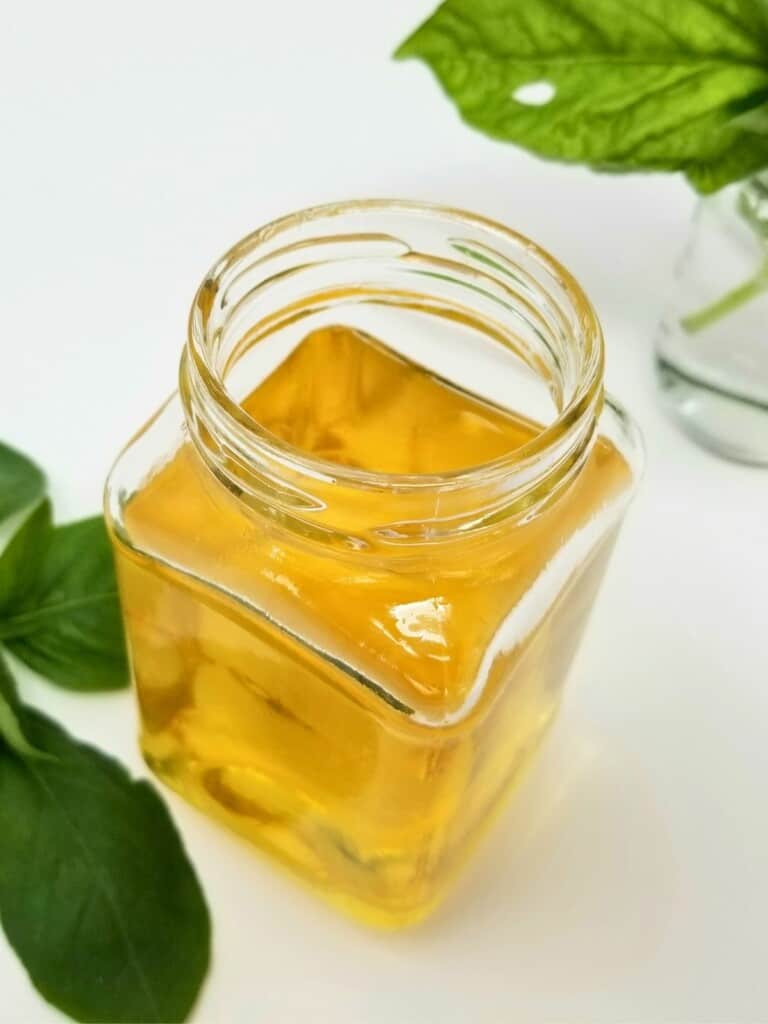
Jump to:
About this recipe
'Simplify' Your Beverages: whether making an iced pear tea in the summer or drinking hot herbal tea in the winter, this homemade basil syrup will make it easy to sweeten drinks. From smoothies and mocktails to lattes and tisanes, now you can sip more sweetly without worrying about an increased histamine burden if you use allulose as the base for your syrup.
Histamine-Friendly Simple Syrup: unlike a traditional white sugar simple syrup, this allulose & monk fruit-based version is virtually calorie-free & not inflammatory, making it a low histamine sweetener. All in all the allulose & monk fruit blend I use can be replaced 1:1 for sugar, but like with any other food, allulose should be (re)introduced to your diet slowly, and then moderately, and then in full portion sizes.
Long Lasting: you can store this homemade sugar-free basil syrup in the depths of your freezer for up to six months (or even a year, if stored particularly well), so you can make a larger batch and keep using it for a whole season. The same goes for my other syrups, like passionfruit syrup and brown sugar syrup.
Ingredients
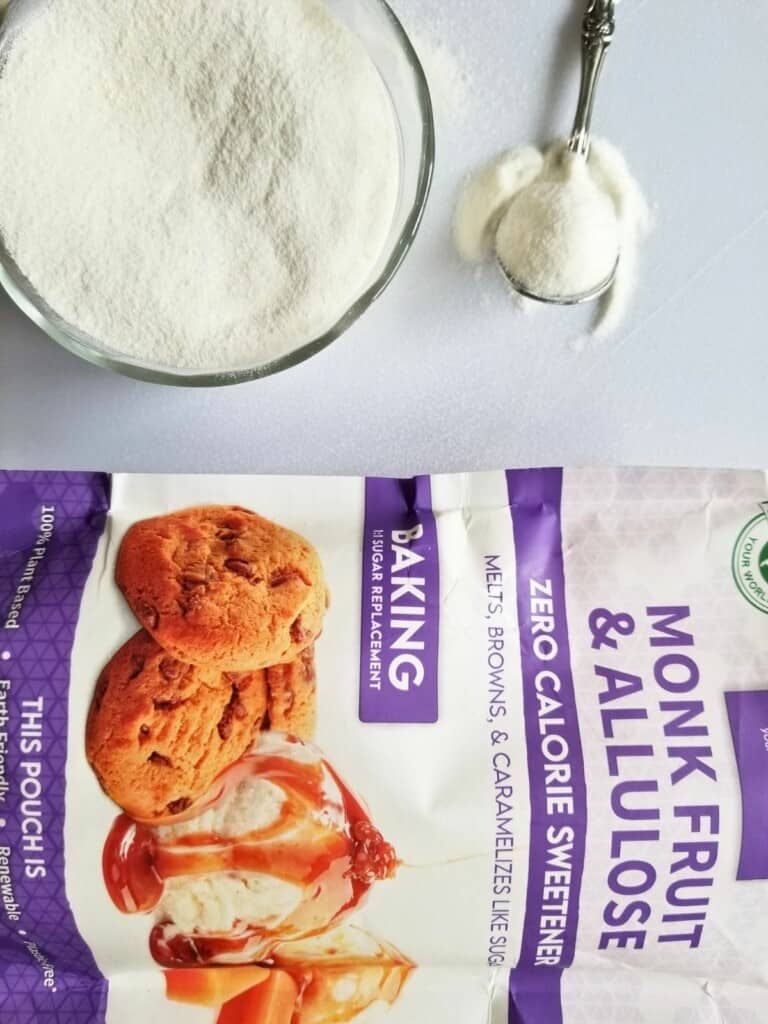
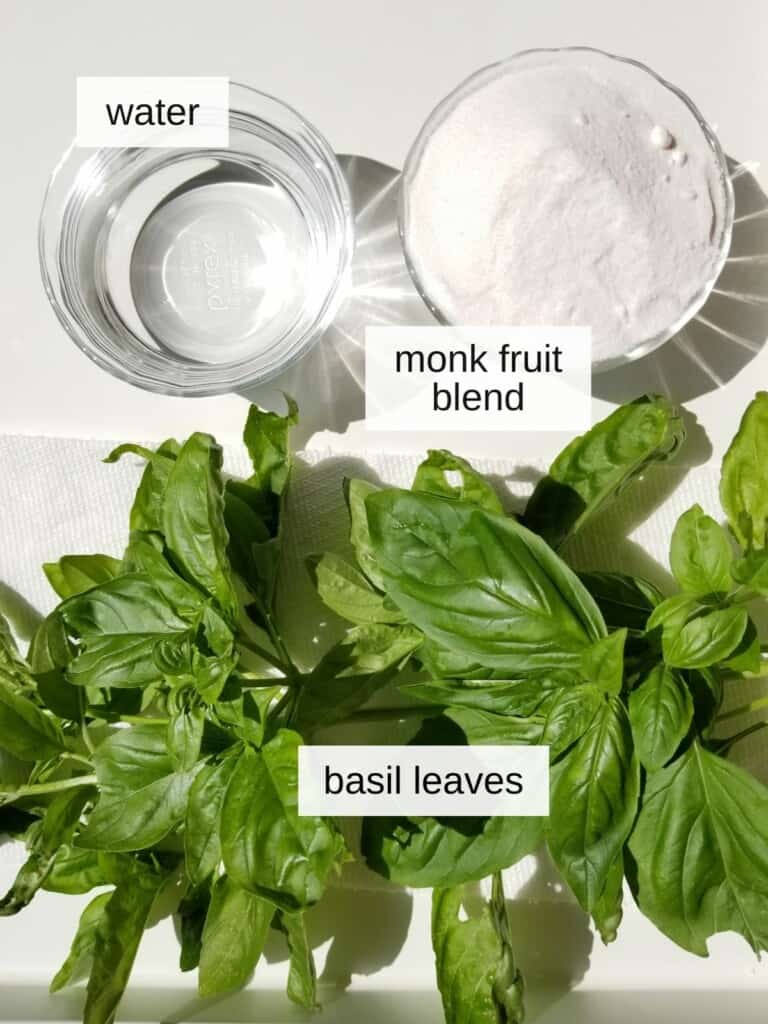
Fresh Basil: this is a highly antihistamine herb that's perhaps best-known as the base of pesto sauce. While this basil simple syrup recipe has quite a different flavor from a dollop of pesto, the herbaceous undertone remains just as light and distinct, but don't try to swap it with the dried stuff because it will not work very well.
Allulose & Monk Fruit: other than water & basil, the only ingredient in this keto basil syrup is my favorite allulose & monk fruit sweetener blend, which to me has no aftertaste. However a very small portion of the population are super tasters, and to them allulose &/or monk fruit may taste somewhat bitter. Make sure you're not one of those people before you invest in a very large bag for mocktail-making.
How to make sugar-free basil syrup: step-by-step instructions
Step 1. Heat the water and allulose in a metal-bottom pan until just simmering and the sweetener has fully dissolved.

Step 2. Then tear or lightly chop the cleaned basil leaves, and add them then stir everything together until the sweetener has fully dissolved.
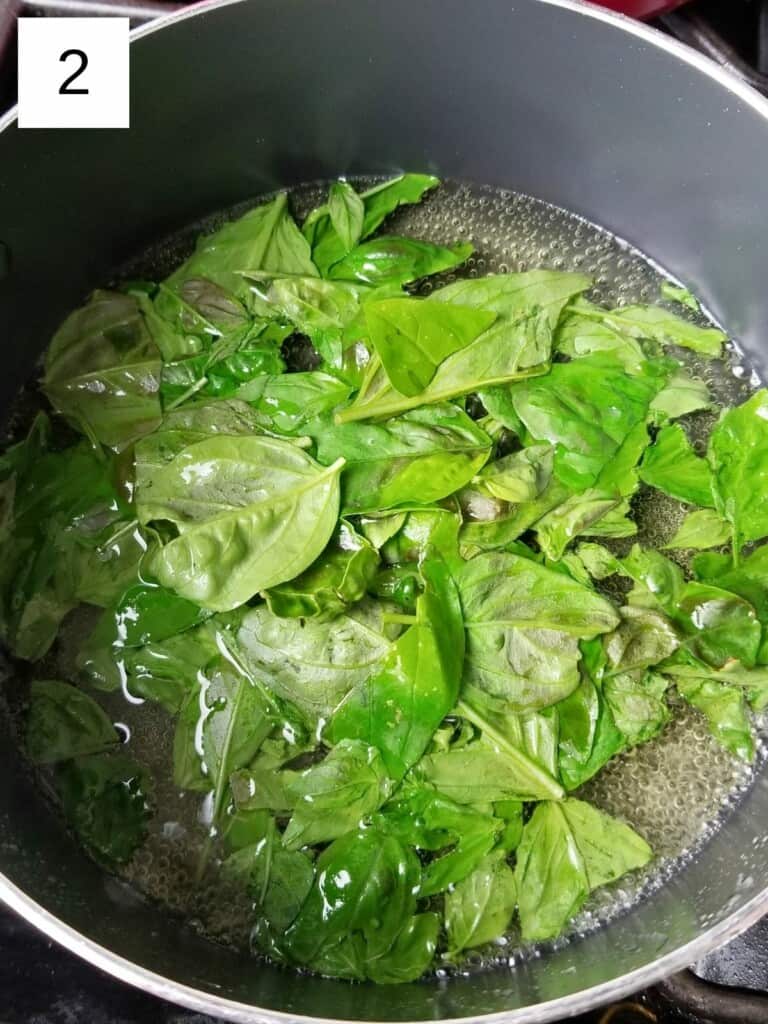
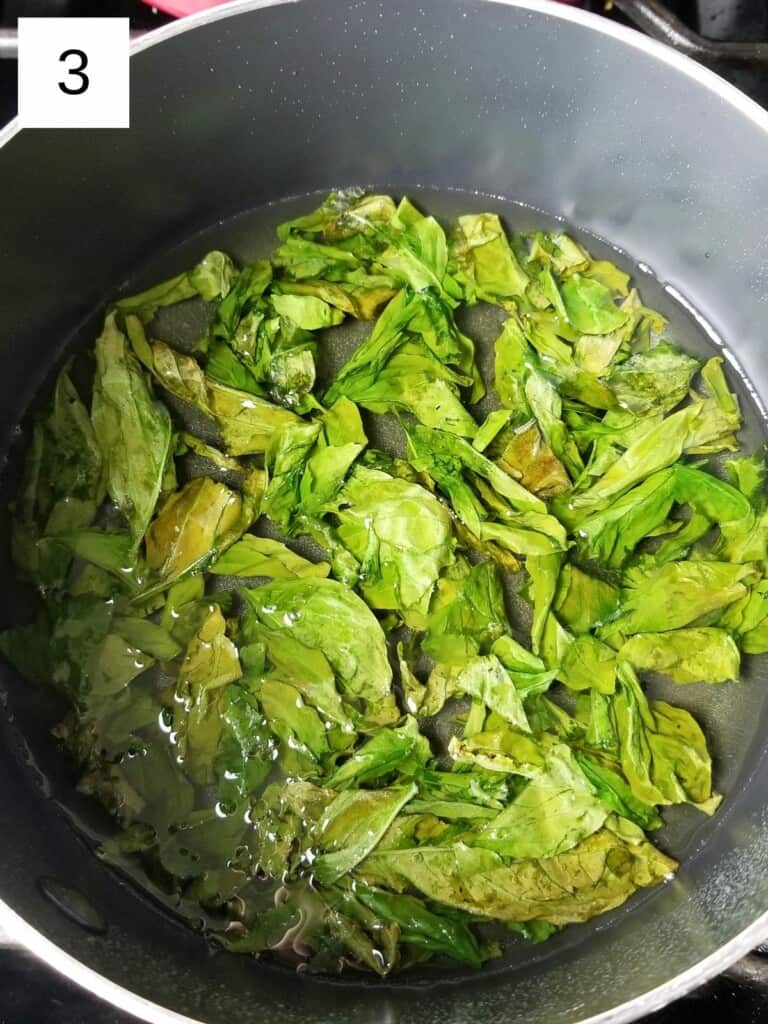
Step 3. Heat the basil mixture on low for five minutes (set a timer), never letting it get above a simmer, stirring occasionally. When your timer goes off, remove the mixture from the heat and let it sit on a cool burner for 30 more minutes (to infuse further). Then strain the mixture and preserve your keto basil syrup in a closed container in the fridge for up to 10 days, or the freezer for 6 months.
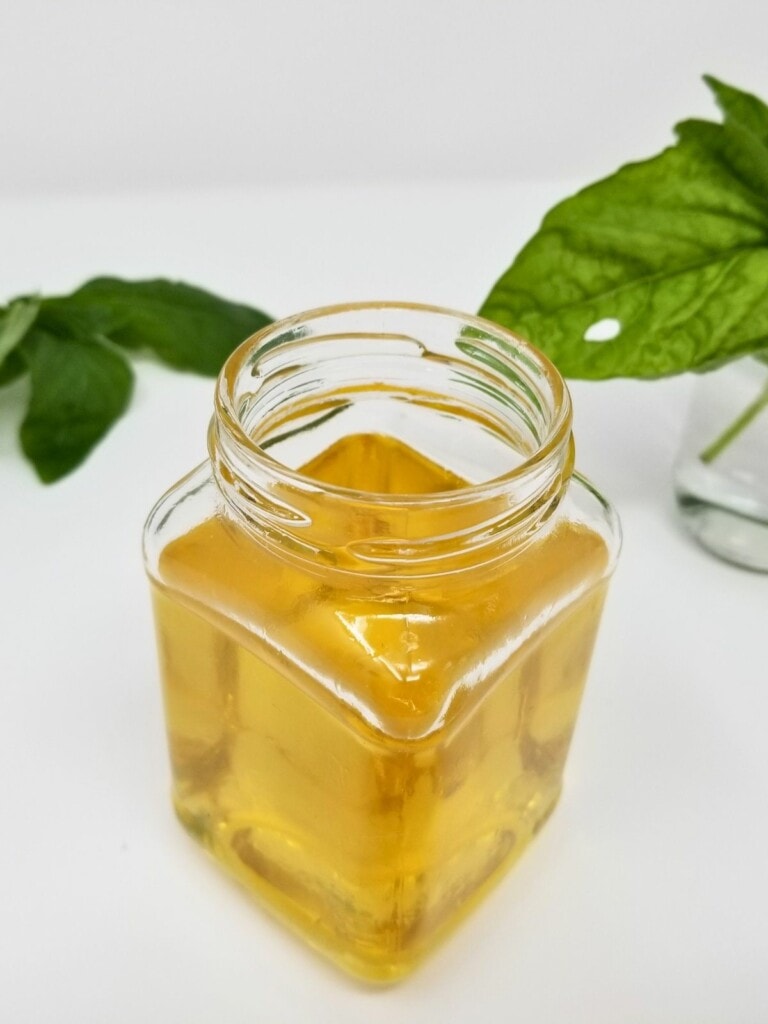
Recipe notes & tips
Swapping Sweeteners: You can use this method and this ratio with a number of other granulated sweeteners to make homemade basil simple syrup, but it won't work with powdered sugar or stevia due to the consistency. Some other sweeteners you could try it with are liquid stevia, brown sugar, coconut sugar, date sugar, panela, and jaggery.
Corn Allergies: If you have any issues with corn, make sure to buy allulose from a company which specifically doesn't source their allulose from corn, as much allulose is manufactured from corn. However it's also found in small amounts in figs, raisins, wheat, maple syrup and molasses.
At roughly five times the price of white sugar, allulose can be a hard sell. But for those who choose to splurge for it, allulose has none of the inflammatory effects, doesn't cause tooth decay, has no calories, and has no effect on insulin.
An easy basil simple syrup recipe, perfect for making mocktails and cocktails, or even topping ice cream. Try this basil syrup to sweeten your next smoothie!
What to do with simple syrup
- use it to sweeten mocktails (or even homemade cocktails!)
- add it to large batches of low histamine teas
- sweeten your morning non-caffeinated blue flower latte
- use is as a bonder for homemade granola
- mix it into your favorite smoothie
- make my lavender blueberry mocktail with basil syrup instead of lavender
- blend it into a vanilla flax pudding
Keto Basil Syrup FAQ
It takes about 20 minutes to make a flavored simple syrup due to the infusion time, though larger batches will take longer since it will need more time to reach boiling temps. A plain simple syrup only take about 15 minutes, most of it for cooling time.
Yes, in order to properly dissolve all of the sugar crystals, it's important to heat the water enough that even the largest sugar crystals melt and the two substances liquefy.
Yes! While a typical simple syrup is made with refined white sugar, for a deeper more caramelized flavor, you can substitute the same amount of brown sugar (though it will no longer be sugar-free).
Yes, you can flavor a simple syrup by infusing it with fresh or dried botanicals of any kind (though how much to use will vary), though you could also add a food-grade essential oil to flavor it. Try swapping out sweetners or combining botanicals for a whole new experience!
📖 Recipe
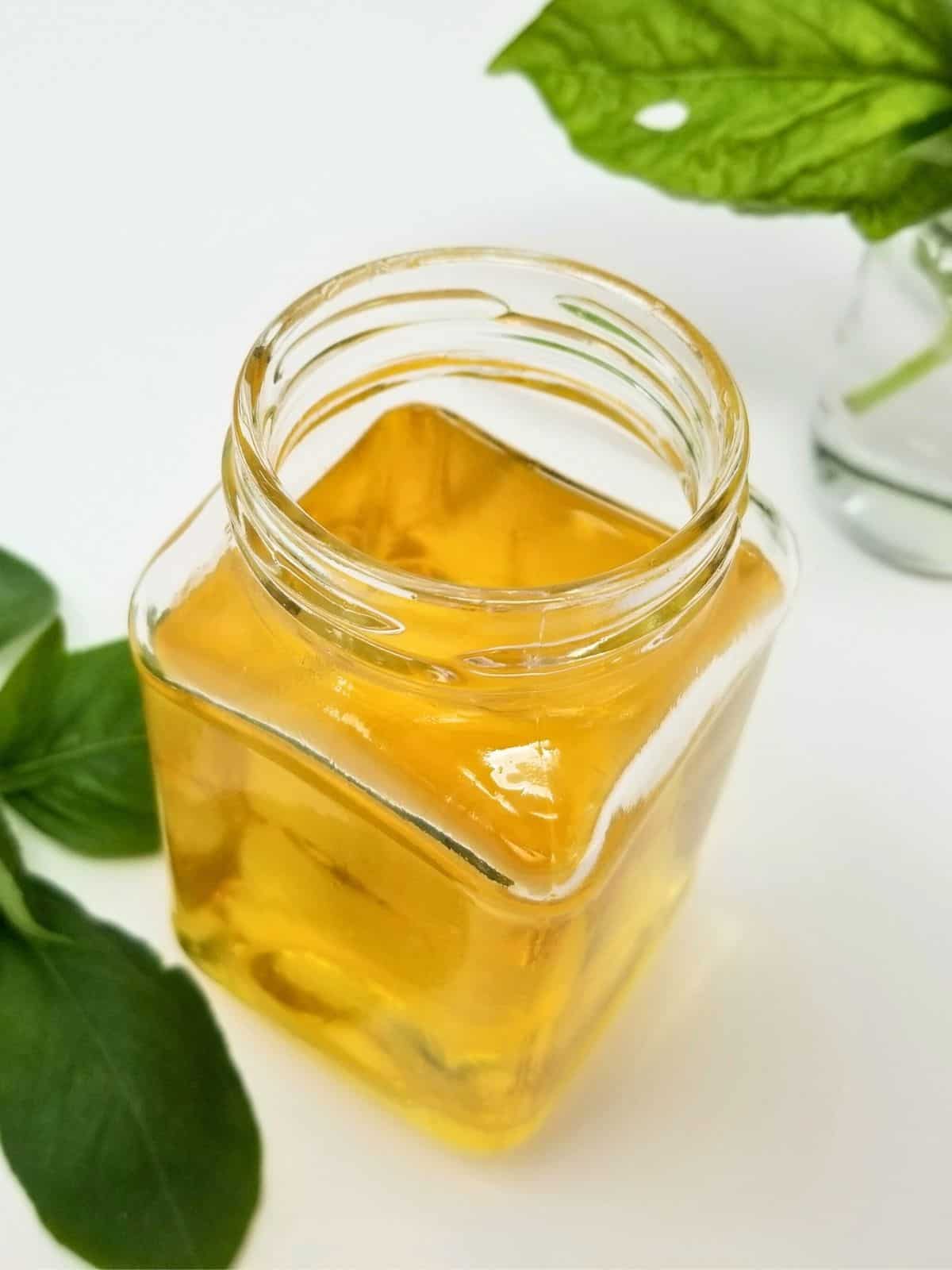
Easy Basil Simple Syrup (3 Ingredients)
Ingredients
- 1 Cup torn fresh basil leaves packed
- 1 Cup allulose monk fruit blend or sugar
- 1 Cup water
Instructions
- Heat the water and allulose in a metal-bottom pan until just simmering and the sweetener has fully dissolved.
- Then tear or lightly chop the cleaned basil leaves, and add them then stir everything together until the sweetener has fully dissolved.
- Heat the basil mixture on low for five minutes (set a timer), never letting it get above a simmer, stirring occasionally. When your timer goes off, remove the mixture from the heat and let it sit on a cool burner for 30 more minutes (to infuse further).
- Then strain the mixture and preserve your keto basil syrup in a closed container in the fridge for up to 10 days, or the freezer for 6 months.














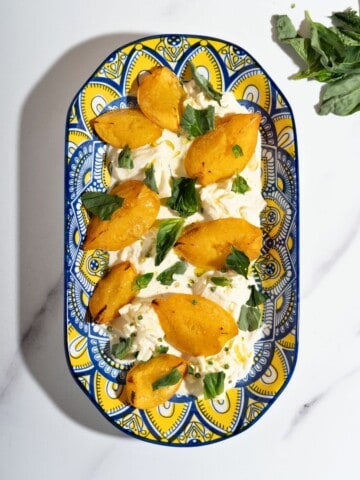
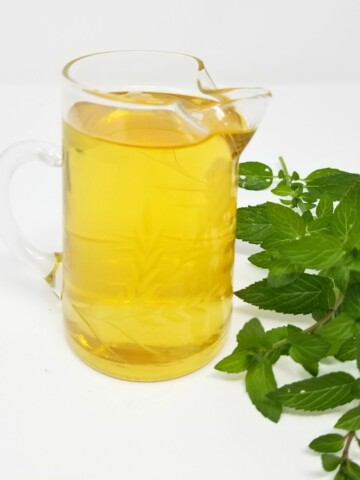

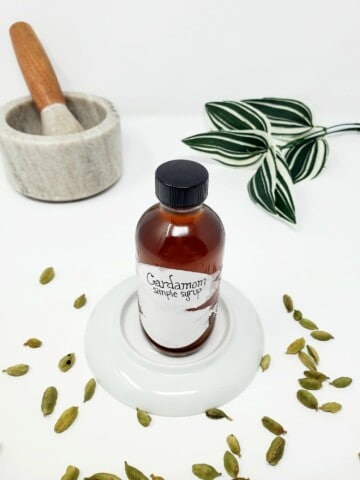
Comments
No Comments